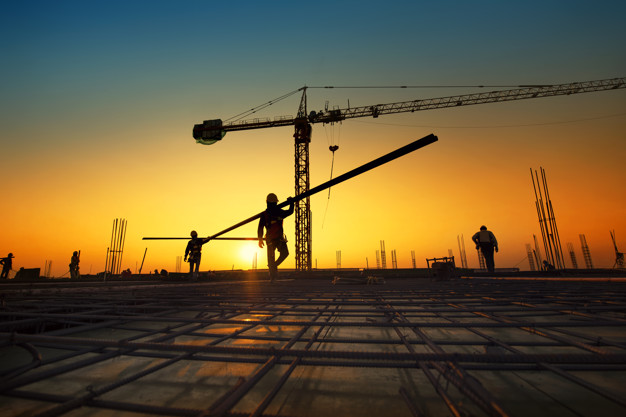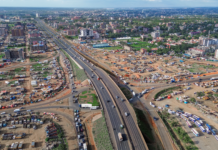Builders and contractors want to keep up with the latest building trends so that they can stay ahead of the competition. With the influence of Chinese contractors, Kenyan construction is taking a turn to the better. Although Kenyans are yet to adjust to the chine way of building. However, builders are learning better and safer ways to construct.
Here are trends that could affect how you conduct construction in 2019:
Better Building Management Software
Construction management software has steadily improved over the last few years, and many affordable packages are now available that bundle together software for bidding and estimating, project management, change orders, scheduling, human resources, billing, accounting and more. 2019 will see more large and small companies making use of affordable integrated software solutions.
Green Design and Building Technology
Also continuing into 2019 is the trend toward green design and technology in construction. Every construction project is expected to increase their participation through green design aiming towards certification. This trend, which started some years ago, will continue to rise in 2019. The essence of green design and construction is an effort to create resource-efficient and environmentally responsible construction projects. It includes every aspect of construction, including planning and design, demolition, and cleanup.
With 20 per cent of global emissions directly attributable to the construction industry, green building practices can go a long way toward supporting, rather than harming, the environment—especially at a time when ageing buildings make new construction so critical.
Sustainability
Closely related to green technology, sustainability can be defined as a broader policy of using methods and business models that make the world a better place. While “green” building practices are really focused mostly on reducing the carbon footprint of a particular construction project, sustainability has broader goals. Among the elements of sustainable construction practice:
- Preservation of the natural environment
- Efficient use of resources
- Promoting social progress and culture
For example, a sustainable construction project may feature building designs aimed at bringing natural light into the centre of a building, thereby reducing electrical costs. Or, a building can be designed to reuse drain water from sinks to flush toilets. Some sustainable projects look to integrate existing structures into a new project, or to make use of recycled or repurposed building materials.
Increasing interest in sustainability by millennial consumers and clients will require forward-thinking construction companies to accommodate this trend in 2019.
Modular, Prefabricated Buildings
In 2019, construction with modular, prefabricated building units will gain more followers and fans in the real estate and construction industries. In a residential building, modular constructions can offer particular benefits to young telecommuting professionals and millennials who seek new housing outside metro areas, in remote suburbs and rural areas where they can enjoy closer contact with nature.
Modular homes constructed off-site reduce the impact on the landscape and offer a faster way to develop residential areas. Construction of modular components can be underway offsite even while permits are being secured and financing is being finalized. Because components are built-in factory environments, weather delays are virtually non-existent. And there is very little waste since scraps and leftover materials are immediately recycled. Modular homes tend to be cheaper and quicker to build, as crews are familiar with assembly methods.
Some modular homes can even be moved from location to location as owners follow employment opportunities or seek new neighbourhood environments.
Growing Material Costs
Costs of building materials will continue to increase into 2019, a trend that began in December 2017, leading to a 9 per cent increase over the course of 2018. Largest cost increases will be seen in iron, steel, manufactured steel products, and softwood construction lumber. The impact of newly initiated import tariffs will increasingly be felt in 2019 through increased costs of materials.
Better Safety Equipment
2019 will see a push toward better safety equipment to counter the higher number of construction-related accidents and fatalities seen in recent years. For example, there are now “smart” work boots available with GPS transmitters that will allow supervisors to spot workers who have fallen or have slowed down due to fatigue. This technology will become increasingly common in 2019. The quality of moisture-wicking fabrics and cooling vests are also improving.
You may also see increased regulatory enforcement aimed at reducing the increased incidence of job site accidents.
Building Information Modeling (BIM)
There is one single tool that can increase effectiveness and collaboration like no other tool: BIM (building information modelling). BIM is a technique of creating computer representations of buildings, roads, and utilities. It is used by architects and engineers to predict job costs and show how building materials and structures will hold up over time. It is increasingly required for many RFPs and government agencies, who insist on understanding the issues a project will face before investing. Building owners can also use BIM to develop maintenance schedules.
BIM not only increases collaboration but also reduces construction costs and promotes a safer, faster building process and fewer safety incidents. BIM will soon be a requirement of construction and building codes. If you are not BIM-ready, try to get a sub-contractor that can become your BIM expert.
Some of these trends simply apply to high-grade construction such as for commercial buildings. For you who wants to build a family home, you can pick some and leave others.














